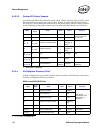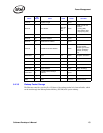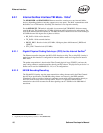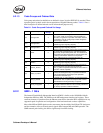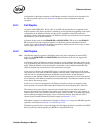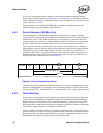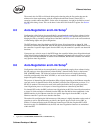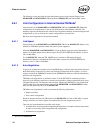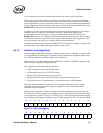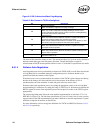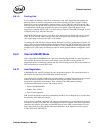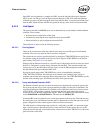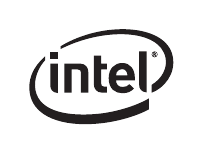
Software Developer’s Manual 159
Ethernet Interface
Configuration of the duplex operation of the Ethernet controller can be forced or determined via
the Auto-Negotiation process. See Section 8.6 for details on link configuration setup and
resolution.
8.4.1 Full Duplex
All aspects of the IEEE 802.3, 802.3u, 802.3z, and 802.3ab specifications are supported in full
duplex operation. Full duplex operation is enabled by several mechanisms depending on the speed
configuration of the Ethernet controller and the specific capabilities of the PHY used in the
application. During full duplex operation, the Ethernet controller may transmit and receive packets
simultaneously across the link interface.
In Internal Serdes mode for the
82546GB/EB and 82545GM/EM (TBI mode for the 82544GC/
EI
), the transmission and reception of packets is indicated by symbols embedded in the data
stream. These symbols delineate the packet encapsulation and the protocol does not rely on other
control signals. See Section 8.2.1.3 for details.
8.4.2 Half Duplex
Note: The Ethernet controller operates in half duplex mode only when configured for internal PHY
mode. For the
82546GB/EB and 82545GM/EM, internal SerDes mode does not support half
duplex operation.
In half duplex mode, the Ethernet controller attempts to avoid contention with other traffic on the
wire, by monitoring the carrier sense signal provided by the internal PHY, and deferring to passing
traffic. When the Internal Carrier Sense signal is deasserted or after sufficient InterPacket Gap
(IPG) has elapsed after a transmission, frame transmission can begin.
In the case of a collision, the internal PHY asserts a collision signal. Transmission of the frame
stops within four clock times and then the Ethernet controller sends a JAM sequence onto the link.
After the end of a collided transmission, the Ethernet controller backs off and attempts to
retransmit per the standard CSMA/CD method. Note that the retransmission is done from the data
stored internally in the Ethernet controller transmit packet buffer. The Ethernet controller does not
access data in host memory again.
In the case of a successful transmission, the Ethernet controller is ready to transmit any other
frames queued in its transmit FIFO within the minimum Inter Frame Spacing (IFS) of the link.
The internal carrier sense signal is expected to be asserted before one slot time has elapsed;
however, the transmission completes successfully even if internal carrier sense is not asserted. If
internal carrier sense is not asserted within the slot time window, the PHY is not behaving properly
and can either be configured incorrectly or be in a link down situation. Note that this event is
counted in the Transmit Without CRS statistic register (see Section 13.7.12).
Half duplex reception is as indicated for full duplex in Section 8.4.1 except for 1000 Mb/s specific
operation, as described in Section 8.4.2.1 and Section 8.4.2.2.
The Ethernet controller does not provide support for half-duplex operation as specified in the IEEE
802.3z specification when operating at 1000 Mb/s in internal PHY mode.




